Introduction
In the realm of modern construction, the choice of materials can make or break a high-end project. Among the many options available, Trespa Pura and wood composite siding stand out for their unique characteristics and aesthetic appeal. Understanding these materials is crucial for homeowners, architects, and builders alike, as they navigate the intricate world of engineered siding solutions.
Defining Trespa Pura and Wood Composite Siding
Trespa Pura is a high-performance exterior cladding solution made from natural fibers and thermosetting resins, known for its durability and design versatility. On the other hand, wood composite siding encompasses a variety of engineered wood products that combine traditional wood aesthetics with modern technology to create synthetic wood siding options that resist warping and decay. Both materials offer distinct advantages but cater to different needs in terms of style, maintenance, and longevity.
The Importance of Material Choices in High-End Projects
Selecting the right material is paramount in high-end projects where aesthetics meet functionality. The right choice not only enhances visual appeal but also contributes to long-term performance, making it essential to weigh options like clapboard siding versus vertical siding carefully. In an era where sustainability matters more than ever, understanding how each material aligns with eco-friendly practices adds another layer to this critical decision-making process.
Overview of Key Comparisons
As we delve deeper into this comparison between Trespa Pura and wood composite siding, we will explore various aspects such as durability, environmental impact, cost analysis, and aesthetic flexibility. Each section will provide insights into how these materials perform under different conditions while considering factors like maintenance requirements and initial investment costs. By illuminating these key comparisons, we aim to assist you in making an informed choice that balances both beauty and practicality in your next building endeavor.
What is Trespa Pura?
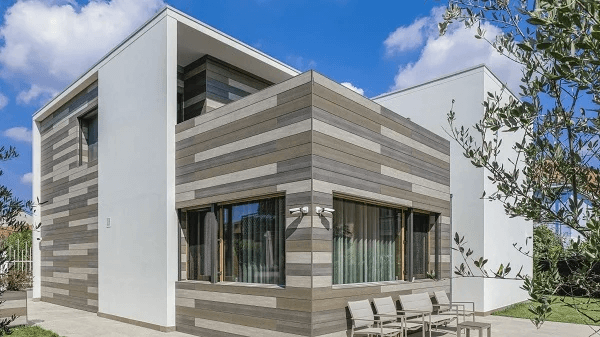
Trespa Pura is an innovative cladding solution that redefines the concept of exterior finishes. Made from high-quality, durable materials, it stands out in the realm of building products, particularly when compared to traditional wood siding and engineered wood siding options. This synthetic wood siding alternative combines aesthetics with performance, making it a popular choice for high-end projects.
Materials and Manufacturing Process
Trespa Pura is crafted from a unique blend of resins and wood fibers, resulting in a robust material that boasts impressive weather resistance. The manufacturing process involves advanced technology that ensures uniformity and durability, setting it apart from conventional clapboard siding and vertical siding options. Unlike engineered siding or composite siding, Trespa's production emphasizes sustainability without compromising on quality.
Key Features and Benefits
One of the standout features of Trespa Pura is its exceptional durability; it can withstand harsh weather conditions without warping or fading like traditional wood composite siding might. Additionally, its low maintenance requirements make it an attractive option for homeowners looking to reduce upkeep costs associated with wood siding or engineered wood alternatives. With a wide range of colors and finishes available, Trespa Pura offers benefits that appeal to both practical needs and aesthetic desires.
Design Versatility and Aesthetic Appeal
Trespa Pura excels in design versatility; whether you're leaning towards a modern look or prefer classic styles reminiscent of traditional clapboard siding, this material delivers on all fronts. Its sleek finish mimics the appearance of natural wood while providing the advantages of synthetic materials—no more worrying about peeling paint or rotting boards! With many options available for vertical siding applications as well as horizontal designs, Trespa Pura allows architects and designers to unleash their creativity without compromise.
Exploring Wood Composite Siding
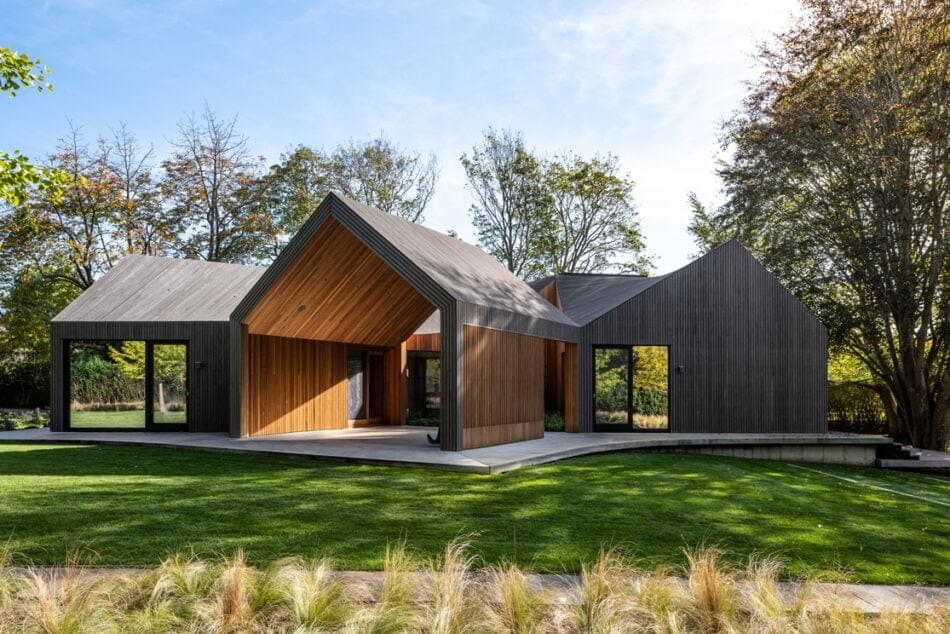
This engineered wood siding combines the beauty of traditional wood with innovative technology, resulting in a product that is both durable and aesthetically pleasing. Whether you're considering clapboard siding or vertical siding designs, understanding the composition and technology behind these materials is essential for making an informed decision.
Composition and Technology Behind Wood Composite
Wood Composite Siding is primarily made from a blend of wood fibers and synthetic materials, creating a robust engineered siding solution. The process typically involves bonding these components under high pressure and heat, resulting in a product that mimics the appearance of natural wood while offering enhanced performance characteristics. This technology allows for various styles, including clapboard siding and vertical siding options, ensuring versatility to suit any architectural design.
One of the key benefits of this synthetic wood siding is its ability to resist warping and splitting—common issues found in traditional wood siding. By utilizing advanced manufacturing techniques, manufacturers can create composite siding that withstands harsh weather conditions without sacrificing visual appeal. So whether you're drawn to the classic look of clapboard or the sleek lines of vertical siding, engineered wood siding offers an attractive solution without the maintenance headaches.
Advantages and Disadvantages
Like any building material, Wood Composite Siding comes with its own set of advantages and disadvantages that should be considered before making a selection. On the positive side, this type of engineered siding often boasts excellent durability; it resists moisture damage better than traditional wood while also being less prone to insect infestations. Additionally, composite siding typically requires less maintenance over time compared to its natural counterparts since it doesn’t need regular painting or staining.
However, there are some drawbacks worth noting as well. While synthetic wood siding can be more affordable upfront than solid wood options, some lower-quality products may not perform as well over time or could fade in color due to prolonged sun exposure. It’s crucial for homeowners to research brands thoroughly before committing; after all, you want your exterior finish to stand up against Mother Nature’s whims!
Style Options and Finish Choices
When it comes to style options for Wood Composite Siding, homeowners are spoiled for choice! From classic clapboard designs that evoke timeless charm to sleek vertical profiles that add modern flair—there's something for everyone in this versatile category of engineered wood siding. Moreover, many manufacturers offer customizable finishes ranging from rich stains reminiscent of natural hardwoods to vibrant colors that make your home stand out on the block.
Another appealing aspect is how easily these materials can mimic various textures found in traditional woods like cedar or pine while providing superior performance benefits like moisture resistance and UV protection. Whether you prefer smooth finishes or textured surfaces resembling real timber grain patterns—the aesthetic possibilities are nearly endless! So go ahead; let your imagination run wild when selecting your perfect composite siding style!
Durability Showdown: Trespa Pura vs Wood Composite
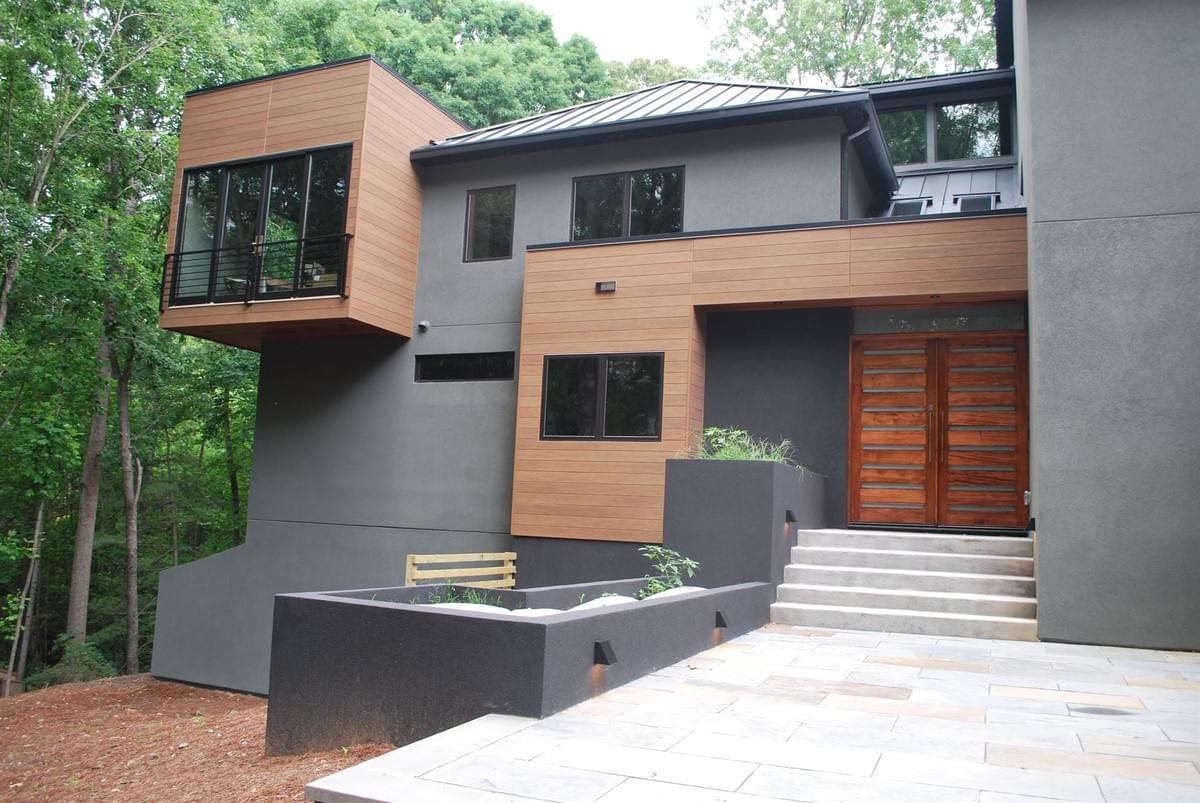
When it comes to durability, both Trespa Pura and wood composite siding present unique advantages and challenges. The longevity of these materials is a crucial factor for homeowners and builders alike, influencing not only aesthetic decisions but also practical considerations in high-end projects. Let’s dive into how they stack up against each other in terms of weather resistance, maintenance requirements, and overall performance over time.
Weather Resistance and Longevity
Trespa Pura is renowned for its exceptional weather resistance, thanks to its high-pressure laminate construction that repels moisture and resists UV damage. This means that unlike traditional wood siding, which can warp or fade under harsh conditions, Trespa maintains its integrity and color over time—ideal for those looking to invest in long-lasting beauty. On the other hand, while engineered wood siding offers a more natural look than synthetic wood siding, it often requires protective coatings to achieve similar levels of durability against the elements.
Wood composite siding has come a long way in terms of weather resistance; however, it typically doesn’t match the resilience of Trespa Pura. While engineered siding can withstand some moisture without significant damage, prolonged exposure can lead to issues like swelling or mold growth if not properly maintained. In contrast, clapboard siding made from Trespa remains impervious to such problems for years on end.
Maintenance Requirements
Maintenance is where many homeowners find themselves weighing their options carefully between these two materials. Trespa Pura requires minimal upkeep due to its durable finish; a simple wash with soap and water is often enough to keep it looking pristine year after year. This low-maintenance aspect makes it particularly appealing for busy homeowners who want the elegance of vertical siding without the hassle.
Conversely, wood composite siding does demand more attention over time—especially if you opt for products that mimic traditional wood finishes rather than opting for fully synthetic alternatives. Regular inspections are necessary to identify any signs of wear or damage that might require touch-ups or repairs; otherwise, you risk compromising the aesthetic appeal of your engineered wood siding as well as its longevity. So while you may enjoy lower upfront costs with composite siding initially, be prepared for ongoing maintenance commitments down the line.
Performance Over Time
When considering performance over time between Trespa Pura and wood composite options like clapboard or vertical siding styles, it's clear that each material has its strengths but also faces challenges as they age. Trespa's robust construction ensures that it retains its structural integrity even after decades of exposure; this means fewer worries about replacement or extensive repairs down the road—truly an investment worth making!
In comparison, while engineered wood siding can perform admirably when properly cared for—offering both beauty and function—it may not hold up as well under extreme conditions without consistent maintenance efforts from homeowners who choose this route instead of going with synthetic alternatives like composite cladding systems designed specifically for durability purposes.
Ultimately though? The choice boils down to your priorities: If you want something virtually worry-free with lasting power (and let’s face it—a sleek appearance), then Trespa Pura might just be your perfect match! But if you're drawn toward aesthetics reminiscent of classic wooden structures while accepting some trade-offs along the way? Engineered options could still deliver satisfying results provided you're ready for regular upkeep!
Environmental Considerations
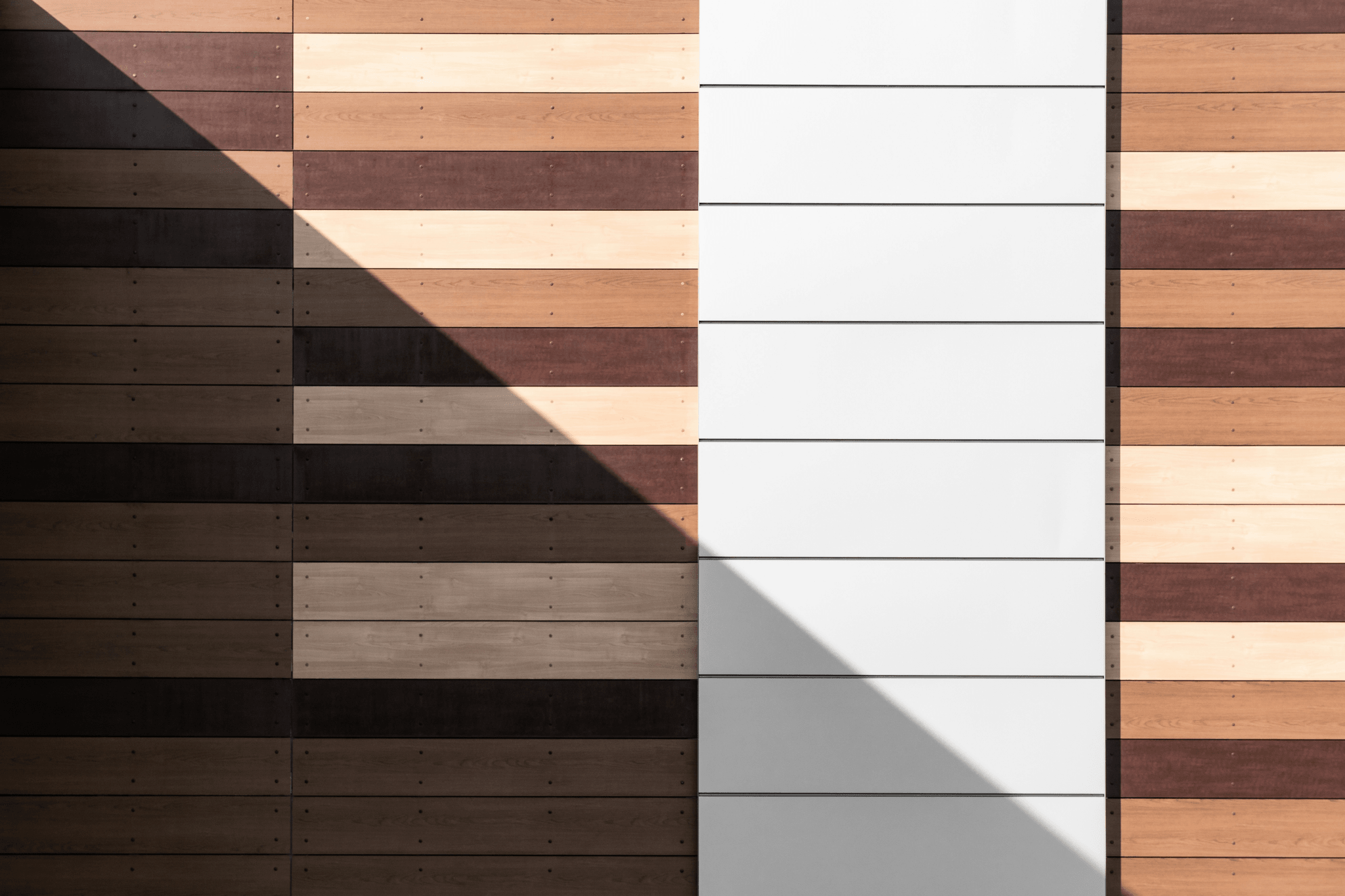
When it comes to choosing materials for construction, environmental considerations play a crucial role in the decision-making process. Both Trespa Pura and wood composite siding present unique attributes that can impact sustainability and eco-friendliness. Understanding these aspects can help ensure that your project aligns with modern environmental standards.
Sustainability of Trespa Pura
Trespa Pura is crafted from high-quality HPL (High-Pressure Laminate), which is known for its durability and low maintenance requirements. This material is produced using sustainable practices, including the use of recycled wood fibers in its manufacturing process. Additionally, Trespa Pura's long lifespan reduces the need for frequent replacements, ultimately minimizing waste over time.
The production process of Trespa also emphasizes energy efficiency, making it a responsible choice for environmentally conscious projects. With its resistance to fading and weathering, this engineered siding maintains its aesthetic appeal without needing harmful treatments or finishes. Consequently, opting for Trespa Pura means you're investing in a product that not only looks good but also contributes positively to sustainability goals.
Eco-Friendly Aspects of Wood Composite Siding
Wood composite siding offers a blend of natural beauty and engineered performance, making it an attractive option for those seeking eco-friendly solutions. Many wood composites are manufactured using recycled materials, helping to reduce deforestation while still achieving the look of traditional wood siding. The use of synthetic wood siding also minimizes the need for chemical treatments typically required by natural wood products.
Moreover, engineered wood siding often includes additives that enhance durability without compromising environmental integrity. This means less frequent replacements and repairs are needed over time—reducing overall waste generated by construction projects. When considering clapboard siding or vertical siding options made from composite materials, you’re not just enhancing your building’s façade; you’re also contributing to a more sustainable future.
Comparing Carbon Footprint and Lifecycle
When evaluating the carbon footprint associated with both Trespa Pura and wood composite siding, it's essential to consider their entire lifecycle—from production through disposal. While Trespa Pura’s manufacturing process boasts lower emissions due to efficient energy use, engineered wood products like synthetic wood siding may offer even greater advantages when sourced responsibly from renewable resources.
In terms of lifecycle assessment, both materials provide significant benefits compared to traditional options; however, their impact can vary based on sourcing practices and local availability. For instance, locally sourced engineered siding may have a smaller carbon footprint than imported alternatives due to reduced transportation emissions. Ultimately, understanding these differences allows builders and homeowners alike to make informed decisions that align with their sustainability goals while enjoying the aesthetic benefits offered by either choice.
Cost Analysis for High-End Projects
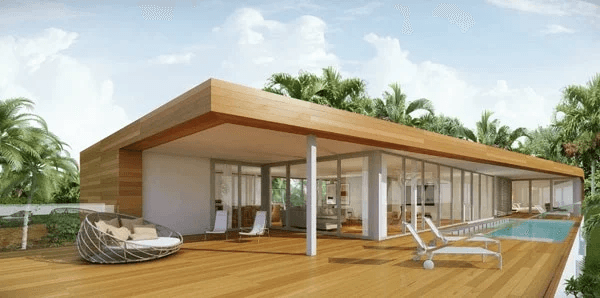
Initial Investment and Budget Considerations
Choosing between Trespa Pura and wood composite siding can significantly impact your project's budget right from the start. Trespa Pura typically commands a higher upfront cost due to its premium materials and manufacturing processes, making it an investment in quality that pays dividends over time. On the other hand, engineered wood siding often presents a more budget-friendly option, but it's essential to weigh this against its performance and longevity.
When planning your budget, consider not just the material costs but also installation expenses. Synthetic wood siding may require specialized installation techniques that could add to labor costs compared to traditional wood siding or clapboard siding options. Therefore, a thorough breakdown of all associated expenses will provide a clearer picture of what you're truly investing in.
Long-Term Value and Return on Investment
The long-term value of your chosen material can be measured through various lenses: durability, maintenance needs, and aesthetic appeal over time. Trespa Pura's exceptional weather resistance means it retains its visual charm without frequent replacements or repairs – translating into lower costs down the line. Meanwhile, while engineered siding like wood composite may come at a lower initial price point, its susceptibility to wear can lead to higher replacement rates.
Investing in high-quality materials like Trespa Pura could mean better resale value for your property as well; potential buyers often appreciate low-maintenance solutions that look good for years on end. In contrast, while some types of composite siding might appeal initially due to their affordability, they may not hold their value as well if they require frequent upkeep or replacement within a few years. Ultimately, selecting materials with proven longevity will bolster your return on investment significantly.
Hidden Costs: Maintenance and Repairs
One aspect often overlooked during budgeting is the hidden costs associated with maintenance and repairs for wood composite siding versus Trespa Pura products. While synthetic wood siding offers an enticing appearance reminiscent of natural timber without some drawbacks—like warping or rotting—it still requires periodic cleaning and treatment to maintain its look over time.
Additionally, consider how these hidden costs can accumulate over time; regular inspections or treatments for engineered wood siding could add up quickly if you’re not careful! This ongoing expense is essential when comparing different materials since what seems like an affordable choice initially may turn out costly when factoring in future maintenance needs or unexpected repairs due to poor weather resistance in less durable options like standard clapboard siding.
In summary, while both Trespa Pura and engineered wood siding offer unique benefits for high-end projects—considering initial investments alongside long-term values will help ensure you make an informed decision that aligns with both your budgetary constraints and aesthetic aspirations.
Conclusion
In the world of high-end construction, the choice between Trespa Pura and wood composite siding can be pivotal. Understanding your project’s specific needs—be it aesthetics, durability, or sustainability—will guide you toward the right material. Whether you lean towards synthetic wood siding or engineered wood siding, each option presents unique benefits worth considering.
Making the Right Choice for Your Project
When selecting materials like engineered siding or composite siding, it's crucial to evaluate how they align with your vision and practical requirements. For instance, if you're aiming for a modern look with minimal maintenance, Trespa Pura might be your best bet. On the other hand, if you're drawn to the classic charm of clapboard siding but want enhanced durability, wood composite siding could offer that perfect blend.
Balancing Aesthetics and Performance
The aesthetic appeal of vertical siding made from engineered wood can elevate any structure while ensuring long-lasting performance. However, it’s essential to weigh these visuals against practical considerations such as maintenance needs and resistance to weather elements. Ultimately, finding that sweet spot between style and function will lead to a successful project outcome.
Sustainable Options in Modern Construction
Sustainability is increasingly becoming a priority in modern construction practices; thus, exploring eco-friendly aspects of both Trespa Pura and wood composite siding is vital. While wood composite options often utilize recycled materials contributing to reduced waste, Trespa Pura boasts impressive longevity that minimizes resource consumption over time. By making informed choices about materials like synthetic wood siding or engineered wood siding, you can contribute positively to environmental efforts without sacrificing quality or aesthetics.
